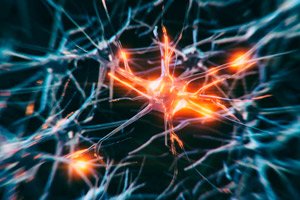
All iLive content is medically reviewed or fact checked to ensure as much factual accuracy as possible.
We have strict sourcing guidelines and only link to reputable media sites, academic research institutions and, whenever possible, medically peer reviewed studies. Note that the numbers in parentheses ([1], [2], etc.) are clickable links to these studies.
If you feel that any of our content is inaccurate, out-of-date, or otherwise questionable, please select it and press Ctrl + Enter.
Chronic infections in the crosshairs: could a microbe cause Alzheimer's?
Last reviewed: 09.08.2025
 ">
">Scientists led by Randy Brutkiewicz have published a review in Trends in Neurosciences that offers clear criteria and a roadmap for determining whether chronic infections can actually cause Alzheimer's disease (AD). The paper, "What would it take to prove that a chronic infection is a causal agent in Alzheimer's disease?" answers a long-debated question: Are associations between microbes and AD sufficient to reach the level of proven causation?
Why is this important?
Over the past decades, numerous observations have accumulated about the detection of various microorganisms in the brain of patients with AD: herpes simplex viruses (HSV-1), the bacterial pathogen Porphyromonas gingivalis from the oral cavity, fungi, and others. But so far, no hypothesis has acquired the status of proven - mainly due to the lack of solid epidemiological and experimental data.
Proposed criteria of evidence
The authors adapt Koch's classical postulates to the modern realities of neurodegenerative diseases and propose a six-stage roadmap:
Robust association
― Selection of large cohorts where the presence of the microorganism in the CNS (by biopsy or biomarkers) reliably correlates with early stages of AD.Time series
- Long-term prospective studies showing that brain cell or peripheral infections precede cognitive decline.Biological mechanism
― A clear description of how a specific pathogen triggers AD pathological cascades: β-amyloid aggregation, tau protein phosphorylation, chronic neuroinflammation.Experimental verification
― In vivo reproductive models (e.g. transgenic mice) where pathogen inoculation results in AD-like changes and behavioral defects.Pathology reversibility
- Anti-infective or vaccine interventions that prevent or partially reverse the development of AD pathology in preclinical and clinical trials.Generalizability
- Multicenter randomized trials with different populations and different routes of infection (nasal, hematogenous, peripheral) should yield comparable results.
Main challenges
- A number of potential pathogens: HSV-1, P. gingivalis, specific fungi and even “microbial quartets” may be involved.
- Forms of infection: latent persistence in neurons vs. peripheral chronic infection with penetration into the CNS.
- Metrics and biomarkers: Standardized methods for detecting pathogens in brain tissue, CSF, and blood, as well as reliable neuroimaging signatures, are needed.
Authors' statements
“We do not deny the important role of aging, genetics and metabolism in AD,” Randy Brutkiewicz emphasizes. “But for the infectious hypothesis to gain proven status, a serious strengthening of the epidemiological and experimental base is required.”
“The main goal is to bring together neurologists, microbiologists and clinicians to develop rigorous, reproducible protocols and evidence criteria,” adds Wei Cao, co-author of the review.
The authors highlight the following key findings and recommendations:
The Need for Prospective Cohorts
“Only long-term studies that track infection long before clinical manifestations of dementia will be able to establish a temporal relationship between infection and AD,” notes Randy Brutkiewicz.Focus on biological mechanisms
“It is important to understand exactly how pathogens trigger β-amyloid aggregation and tau phosphorylation – without a clear mechanism, any association will remain only correlational,” adds Wei Cao.Verification in animal models
“Standardized in vivo models are needed where inoculation of a specific pathogen reproduces AD pathology and cognitive deficits,” emphasizes Julia Kim.Clinical Trials of Interventions
“If an infectious role is confirmed, the next step would be to test vaccines or antimicrobials to prevent or slow the progression of Alzheimer’s disease,” concludes co-author Maria Ramos.
This review provides a clear roadmap for testing the role of microbes in Alzheimer’s disease, inviting the scientific community to coordinate multidisciplinary research efforts. If the infectious hypothesis is confirmed, it could radically change approaches to AD prevention and treatment, from early screening for chronic infections to the development of anti-infective therapies and vaccines.
